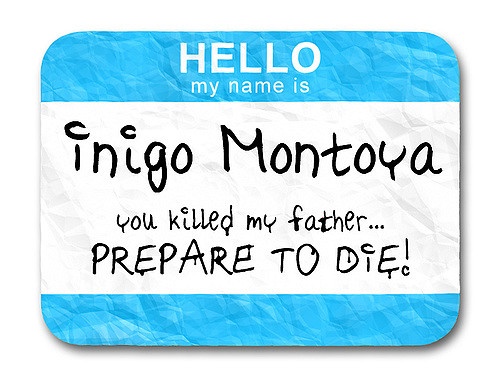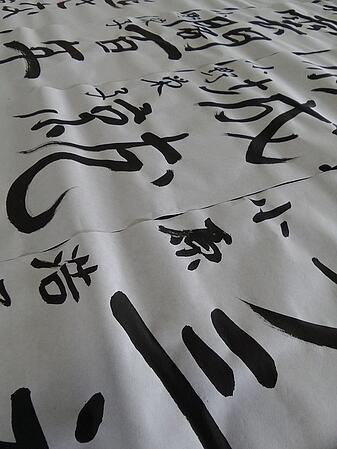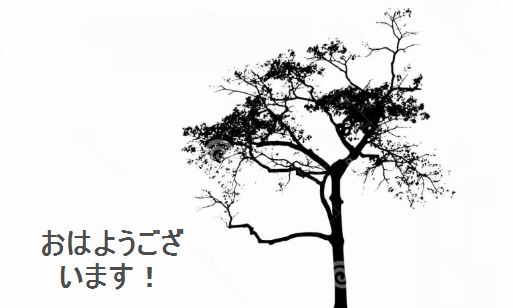How to Say “Good Morning” in Japanese + 9 Other Greetings
Say Good morning in Japanese
If you’re heading to Japan or thinking of studying Japanese, you’ll definitely want a firm grasp of the basic greetings and phrases. What’s “good morning” in Japanese? What’s “good afternoon” in Japanese?
In this article, I will teach you 10 common Japanese greetings, from how to say good morning in Japanese to how to introduce yourself properly. I’ll then give you my top tips for using these greetings both appropriately and effectively.
10 Common Japanese Greetings and How to Use Them
The Japanese language uses different greetings depending on the time of day (as English does) and the situation (such as whether the person you’re greeting is a close friend or a superior at work). Let’s take a look at the most common Japanese phrases and how to use them.
#1: Good Morning = Ohayō おはよう / Ohayō Gozaimasu おはようございます
It’s essential to know how to say good morning in Japanese. There are two basic ways to say this greeting, depending on the level of formality you’re using (and are expected to use).
The first way to say good morning is ohayō おはよう (pronounced a lot like the state Ohio). This is the casual form, which you’d mainly use with close friends and family members.
The second way to say good morning in Japanese is ohayō gozaimasu おはようございます. This is a more formal version. Gozaimasu is a common suffix in Japanese used to indicate a high degree of politeness and respect. Since this form is more polite, you’ll often hear it in Japan in places such as schools, stores, workplaces, etc.
Pronunciation
Ohayō sounds very similar to the US state Ohio (oh-high-yoh). The only big difference is that you enunciate the “y” sound a little more strongly and hold the final “o” sound out longer (that’s why there’s a line above the letter). Gozaimasu is pronounced goh-zigh-moss.
Usage
- While most people use this greeting in the morning (no surprise there!), it’s not rare to hear ohayō gozaimasu or ohayō in the afternoon, too, especially if it’s the first time you’re seeing someone that day (such as if your work day starts at 1 pm).
- It’s common to say ohayō gozaimasu while bowing (formal) or giving a nod and a smile (less formal).
- Typically written in the hiragana alphabet as おはよう (ohayō) or おはようございます (ohayō gozaimasu).
[amazon box=”B07NCRLGYH” “small”]
#2: Good Afternoon / Hello = Konnichiwa こんにちは
This famous Japanese greeting is well known in the English-speaking world (though we’ve actually butchered the pronunciation a bit!). Konnichiwa こんにちは means good afternoon in Japanese—or, more generally, hello—and is typically used from late morning to late afternoon.
Pronunciation
The pronunciation of konnichiwa is kohn-nee-chee-wah. Make sure to hold out the “n” sound in the middle of the word (that’s why there are two of them). It’ll probably feel a bit weird doing this if you’re not used to Japanese sounds, but trust me when I say it’ll make you sound much more like a native speaker in the end!
Usage
- Unlike the difference between ohayō and ohayō gozaimasu, you may say konnichiwa with people you either know or don’t know equally.
- Like ohayō gozaimasu, it’s common to say konnichiwa while bowing (formal) or giving a head nod and a smile (less formal).
- Typically written in the hiragana alphabet as こんにちは, though it may also be written in kanji as 今日は. This second spelling can be confusing, however, as it also means きょうは (kyō wa), or “as for today.”

When it starts to get dark like this, konnichiwa just won’t cut it.
#3: Good Evening = Konbanwa / Kombanwa こんばんは
Making our way to the end of the day now! Konbanwa (or kombanwa) こんばんは, meaning good evening, is primarily used—you guessed it—in the evening and at night. There’s no exact time you must begin using this phrase instead of konnichiwa. In general, though, once it starts to get dark out, this is the greeting to use.
Pronunciation
The pronunciation of konbanwa is kohn-bahn-wah; however, note that the “n” sounds here are a little more nasal-sounding than they would be in English. This is why you’ll sometimes see the first “n” in konbanwa written as an “m” (kombanwa). Pronouncing this first “n” more like an “m” will ultimately help you sound more like a native Japanese speaker.
As for the second “n,” think of it as if you’re saying the “ng” sound, but without the final “g.”
Usage
- Unlike the difference between ohayō and ohayō gozaimasu, you may say konbanwa with people you either know or don’t know equally.
- It’s common to say konbanwa while bowing (formal) or giving a head nod and a smile (less formal).
- Typically written in the hiragana alphabet as こんばんは, though it may also be written in kanji as 今晩は.
[amazon box=”B07NCRLGYH” “small”]
#4: Good Night = Oyasuminasai おやすみなさい
Oyasuminasai おやすみなさい is used the same way its English equivalent, “good night,” is used. In Japan, it’s customary to say this phrase when preparing to go to bed, or when about to head home after a night out with friends and/or coworkers.
Pronunciation
Oyasuminasai is pronounced oh-yah-soo-mee-nah-sigh.
Usage
- You may use the casual form oyasumi おやすみ when saying good night to a family member or close friend.
- Can be written in all hiragana as おやすみなさい, or with kanji as お休みなさい (休み means “rest”).

The proper way to introduce yourself in English … to the man who killed your father. (oxygeon/Flickr)
#5: How Do You Do? = Hajimemashite はじめまして
Hajimemashite はじめまして should only be used when meeting someone for the first time. It is similar to the English greeting “How do you do?” though some might translate it as “Nice to meet you” or “Pleased to meet you.”
Pronunciation
This word is pretty much pronounced how it’s spelled: ha-jee-meh-mosh-teh. Notice how you don’t overly enunciate the “i” after the “sh” sound.
Usage
- This phrase is generally the first thing you say to someone new, followed by your name and then another common phrase: dōzo yoroshiku or yoroshiku onegaishimasu (see below for more on this greeting), which is typically translated as “Nice to meet you.”
- Usually written in hiragana as はじめまして, though you may also write it with kanji as 初めまして (初 means “for the first time”).
#6: Nice to Meet You / Thank You = Yoroshiku Onegaishimasu よろしくお願いします
Yoroshiku onegaishimasu よろしくお願いします is a somewhat complicated greeting, as there are many different ways to use and say it. As a result, it doesn’t translate easily into English.
One translation of yoroshiku onegaishimasu is “Nice to meet you” or “Please treat me well” if you say it when meeting someone new. That said, it can also mean “Please and thank you” or “Thank you in advance” if you are instead using it to ask someone for a favor.
Other translations of this phrase include “Thank you for understanding” or “I am indebted to you” (if someone is doing or will be doing something to help or benefit you in some way).
In terms of formality, there are multiple ways to say yoroshiku onegaishimasu in Japanese. Here are the different versions of this phrase, from most formal to least formal:
- Dōzo yoroshiku onegaishimasu どうぞよろしくお願いします (more formal)
- Yoroshiku onegaishimasu よろしくお願いします (formal)
- Dōzo yoroshiku どうぞよろしく (less formal)
- Yoroshiku よろしく (casual)
[amazon box=”B07SDFC9QT” “small”]
Pronunciation
Dōzo is pronounced doh-zoh. Make sure to extend the first “oh” sound a bit (you can see it has the line above it to indicate this).
Yoroshiku is also pronounced pretty simply: yoh-roh-shee-koo. Note that the “r” sound in Japanese is very different from the English “r.” It’s a lot more like a mix between an “r,” “l,” and “d” (similar to how North Americans pronounce the “d” sound in “ladder” or the “t” sound in “better”).
Onegaishimasu is pronounced oh-neh-guy-shee-moss. Note that you don’t need to overly enunciate the final “u” sound.
Usage
- This is a go-to phrase for Japanese people, as it fits many kinds of situations. It is a polite (and expected) way to thank someone in advance and to address someone you have just met (“Nice to meet you”).
- It’s common to say this phrase while bowing (formal) or offering a head nod and a smile (less formal), especially when meeting someone for the first time.

“Long time, no see,” said the girl who had just seen her cat two minutes earlier.
#7: Long Time, No See = Ohisashiburi Desu お久しぶりです
The greeting ohisashiburi desu お久しぶりです is best translated as “Long time, no see!” It can also be translated as “It’s been a while.” This is the phrase you use when you haven’t seen somebody in a long time; you cannot use it when meeting someone for the first time.
There are different ways to say this phrase depending on the level of formality you want to use. Ohisashiburi desu is the formal version. However, you can shorten this to hisashiburi 久しぶり if the situation is casual (e.g., you’re speaking with a friend or family member).
Pronunciation
Ohisashiburi desu is pronounced oh-hee-sah-shee-boo-ree-dess. Note that the final “u” in desu is very soft—so much so that you can basically drop it altogether. Remember that the Japanese “r” sound is not like the English “r” and is actually more closely related to the “d” sound in the word “ladder” (in short, it’s a mix between a “d,” “r,” and “l” sound).
Usage
- Many people add the suffix ne ね to the end of this greeting; this is similar to asking for a sign of agreement (like the English “you know?” or “isn’t it?”). You could say ohisashiburi desu ne お久しぶりですね (formal) or hisashiburi ne 久しぶりね (casual).
#8: Goodbye = Sayōnara さようなら or Shitsureishimasu 失礼します
You’ve likely heard the first of these two phrases, but did you know that it’s not always appropriate to use sayōnara さようなら—even when you mean to say goodbye?
In truth, sayōnara implies that you’ll be leaving for a long time or won’t be seeing whomever you’re saying goodbye to for a while (or even ever again). You can think of it as being similar to the English word farewell in that it’s somewhat dramatic and theatrical. As a result, it’s not actually used all that often in everyday Japanese conversation.
By contrast, shitsureishimasu 失礼します is a more formal (and common) way of saying goodbye. It’s often used in places such as schools, workplaces, hospitals, etc. There is no implication here that you won’t be seeing the person again for a long time. This phrase literally translates to “I am going to be rude” or “Excuse me for being rude.”
[amazon box=”B07SDFC9QT” “small”]
Pronunciation
Sayōnara is pronounced sah-yoh-nah-rah. Once again, do not pronounce the “r” as you would an English “r” but rather as you do the “d” sound in the word “ladder.” Be sure to also stress the “o” sound, as this is elongated.
Shitsureishimasu is pronounced sheet-soo-ray-shee-moss. As mentioned above, do not pronounce the “r” sound as you would an English “r.” You can also drop the final “u” sound, as this is very soft (so it sounds more like “moss,” not “moss-oo”)
Usage
- What exactly is the difference between sayōnara and shitsureishimasu? Here’s an example: you’ve just finished work and are preparing to say goodbye to your coworkers. If you say shitsureishimasu, this means that you’re going now (and will see them tomorrow). On the other hand, if you say sayōnara, your coworkers would most likely become worried, possibly thinking that you’ve been fired or are planning to leave work permanently!
- Shitsureishimasu can also mean “Excuse me” or “Excuse me for bothering you” when entering a teacher or boss’s office. In this sense, it’s both a greeting and a parting phrase.
- When leaving to go home from work early, it’s customary to say osakini shitsureishimasu お先に失礼します (“Excuse me for leaving early/first”). The osakini indicates that you are excusing yourself for leaving before your coworkers and/or superiors do.

#9: See You = Jaa Ne じゃあね or Mata Ne またね
These are the two phrases to use when saying goodbye in casual situations—not sayōnara (which is somewhat dramatic) or shitsureishimasu (which is quite formal). Both jaa ne じゃあね and mata ne またね mean something along the lines of “See you later!” or “See you!”
You may also add the jaa part to mata ne by saying jaa mata ne じゃあまたね or just jaa mata じゃあまた (jaa means “well” or “then”).
Pronunciation
Both of these phrases are easy to pronounce. Jaa ne is pronounced jah-neh (the two a’s mean you should hold out the “ah” sound a little bit). Mata ne is pronounced mah-tah-neh, with the stress on the “mah” syllable.
[amazon box=”B01GDWNV68″ “small”]
Here’s a helpful video that explains the differences between various ways of saying goodbye in the Japanese language:
Usage
- Don’t use these parting phrases in formal situations, such as at work or when speaking to a teacher at school.
- There are a few variations of these phrases. Others include mata ashita また明日 (see you tomorrow) and dewa mata ne ではまたね (dewa is the formal form of jaa).
#10: Welcome = Irasshaimase いらっしゃいませ
Irasshaimase いらっしゃいませ is a highly common word you’ll hear in Japan, though you yourself probably won’t use it all that much, if at all. The word means “Welcome!” and is primarily used by shopkeepers, restaurant workers, and others to greet customers who enter the shop/store, restaurant, or other business.
Pronunciation
Irasshaimase is a pretty fun word to say, especially if you want to accurately mimic shopkeepers. It is pronounced ee-rah-shy-moss-eh, with a slight pause between the “rah” and “shy” sounds. Don’t forget that the Japanese “r” sounds like a combination of the English “r,” “l,” and “d” sounds.
Usage
- Although you most likely won’t need to say this word aloud, it’s important to understand what it means so that you can know why people are yelling it at you when you enter a store!
- There’s no need to respond to this greeting. However, it doesn’t hurt to offer a polite nod and a smile, especially if the person saying it is looking at you or in your direction.
- You might occasionally hear the shortened version of this word, irasshai いらっしゃい

How to Use Japanese Greetings: 2 Essential Tips
We’ve gone over quite a few common greetings, from how to say good morning in Japanese to how to welcome customers to a shop or restaurant in Japanese. Now, we’ll look at two essential tips to help you use all of these Japanese greetings correctly.
Tip 1: Bow When Appropriate
Not every situation requires a 90 degree bow, but it’s important to remember to bow (or at least offer a deep head nod) when appropriate so that you don’t offend anyone—especially when it comes to teachers/professors, bosses, clients, etc.
For example, say you’re taking a Japanese class. As you leave the classroom, it would be expected for you to say shitsureishimasu. While you don’t necessarily need to stop and do a full bow to your teacher, a low head nod and a smile is both polite and appropriate.
[amazon box=”B07SDFC9QT” “small”]
Tip 2: When in Doubt, Err on Formal
If you’re studying Japanese, you’ve likely heard that formality is a big deal in Japanese culture. This is generally true—and it can make using the Japanese language pretty darn confusing.
If you’re ever doubting whether to use the formal or casual form of a phrase, just go with formal. There’s nothing wrong with being a little more polite; however, it’s definitely wrong (and offensive!) to be overly casual when you should be using far more deferential language with whomever you’re speaking to.
Ultimately, the only time you should use casual Japanese is when you’re speaking with close friends and family members (although even within families, children are usually expected to use more respectful language toward older relatives).




